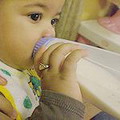酚甲烷可能對兒童的腦部、行為和前列腺造成影響
 有關「酚甲烷」是否造成健康危害的安全爭議,美國兩個聯邦政府機構產生歧見。酚甲烷,英名Bisphenol A,縮寫BPA,或譯作雙酚A,是一種用於硬質塑膠產品之化學物,如嬰兒奶瓶、水瓶、食品包裝內襯、飲料罐的內層都有使用。
有關「酚甲烷」是否造成健康危害的安全爭議,美國兩個聯邦政府機構產生歧見。酚甲烷,英名Bisphenol A,縮寫BPA,或譯作雙酚A,是一種用於硬質塑膠產品之化學物,如嬰兒奶瓶、水瓶、食品包裝內襯、飲料罐的內層都有使用。
9月3日由美國國立衛生研究院「全國毒物計畫」(NTP)發表的報告發現,酚甲烷可能會改變腦部的發展和行為,同時增加兒童、嬰兒和胚胎發生前列腺癌的可能,這份報告剛好和8月美國食品藥品管理局(FDA)對該化學成分的安全用量評估完全相反。
美國國立衛生研究院的這份報告是根據261份的科學刊物所發表,但是剛好與8月份美國食品藥品管理局的結果相反,8月份的報告指出酚甲烷現在的暴露程度對人體安全,也不建議禁止使用這項化學物質。
疾病控制與預防中心表示大約93%的美國人在他們的尿液之中可以測到酚甲烷,這個資料是由2500個六歲以上的美國人在2003到2004年的全國健康調查提供的尿液樣本中所得到。
而這份新的報告是由全國毒物計畫所撰寫,其根據人類生殖風險評估中心,所召集的專家小組提供的資料顯示,酚甲烷有可能對人類生殖和發育有不良的影響,這個專家小組於2007年8月完成報告,全國毒物計畫還包含了2007年8月之後其他的科學資訊。
人類生殖風險評估中心(CERHR)執行長薛畢(Michael Shelby)博士表示,之所以選擇酚甲烷來研究是因為人類普遍地接觸此化學物,再加上民眾對於公共健康的關注,此化學物的大量生產,同時還有在實驗室的動物研究中,出現相關生殖和發展毒理學的證據。
再檢視了證據之後,全國毒物計畫表示:「對於人類接觸酚甲烷,對腦部、行為和對兒童、嬰兒和胚胎的前列腺造成的影響有所擔憂。」
非營利研究機構環境工作團體的執行長威力斯(Richard Wiles)9月3日表示:「和FDA不同的是,NTP聽到了國內傑出的科學家們的聲音,而且表示應該重視酚甲烷對兒童腦部、身體和行為的威脅」。
他指出NTP檢視了數百份獨立的科學研究才得出此結論,而FDA僅依賴三份由化學產業資助的研究報告就通過此毒性化學物在消費品市場的廣大應用。
「產品的安全性是我們的優先考慮,」美國化學委員會聚碳酸酯/酚甲烷小組的漢提博士(Steven Hentges)表示,「FDA使用了一份NTP早先研究草稿作為安全性評估的根據,而那份草稿裡證實了由聚碳酸酯塑膠所製成的兒童或是嬰兒用食物容器可以持續使用,沒有安全顧慮。」
FDA的報告草稿於8月15號發表,其中表明根據實驗室的老鼠實驗,嬰兒和成人對於酚甲烷的接觸低於有毒害的等級。
Two federal government agencies are at odds over the safety of bisphenol A, a chemical used to harden plastic products such as baby bottles and drinking water bottles and for lining food and beverage cans.
A report today by the National Institutes of Health's National Toxicology Program finding that bisphenol A may alter brain development and behavior and increase the risk of prostate cancer in children, infants and fetuses is in direct contradiction to last month's assessment by the U.S. Food and Drug Administration that the chemical is safe at current levels of exposure.
Based on 261 scientific publications, the National Toxicology Program report contradicts an FDA draft report released in August which found that bisphenol A is safe at current human exposure levels and does not recommend banning the chemical.
Some 93 percent of Americans have detectable levels of bisphenol A in their urine, according to data from the Centers for Disease Control and Prevention on urine samples provided by 2,500 Americans aged six and older for a national health survey in 2003-2004.
The report released today was conducted by the National Toxicology Program based on the assessment of an expert panel convened by the Center for the Evaluation of Risks to Human Reproduction that evaluated the potential for bisphenol A to cause adverse effects on reproduction and development in humans. The panel completed its evaluation in August 2007 and the NTP assessment also includes scientific information that has been reported since then.
CERHR Director Dr. Michael Shelby states in the report that bisphenol A was selected for evaluation because of widespread human exposure, public concern for possible health effects from human exposures, high production volume, and evidence of reproductive and developmental toxicity in laboratory animal studies.
After assessing the evidence, the National Toxicology Program said it has "some concern for effects on the brain, behavior, and prostate gland in fetuses, infants, and children at current human exposures to bisphenol A."
Richard Wiles, executive director of the nonprofit research organization Environmental Working Group, said today in a statement, "Unlike the FDA, NTP has listened to the nation's premier scientists and has concluded that the BPA threat to the brains, bodies and behavior of our children must be taken seriously."
He points out that the NTP reviewed several hundred independent scientific studies before reaching its conclusion, while the FDA relied on three chemical-industry funded reports, which gave the toxic chemical the thumbs up for use in consumer products.
"The safety of our products is our highest priority," said Steven Hentges, PhD, of the American Chemistry Council's Polycarbonate/BPA Global Group. "An earlier draft of the NTP report has already been used by the Food and Drug Administration to support their safety assessment, which confirms that food-contact products made from polycarbonate plastic, including products for infants and children, can continue to be used safely."
The FDA draft report, released August 15, states that based on lab tests in rodents, infants and adults are exposed to bisphenol A levels that are below toxic levels.


